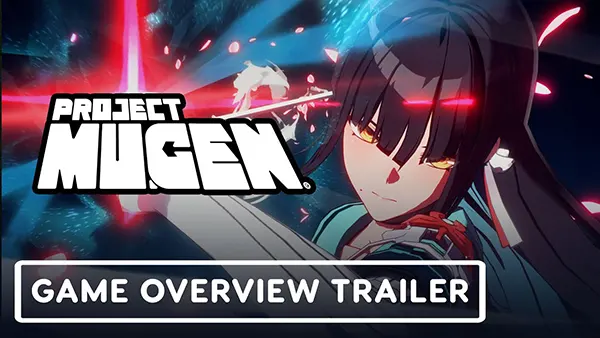
Project Mugen: Urban Anime Vision in an Open World
Project Mugen, developed by Thunder Fire Studio and published by NetEase Games, has emerged as one of the most intriguing mobile and cross-platform gaming titles of 2025. Combining futuristic urban landscapes, anime aesthetics, and open-world gameplay, it carves out a niche between exploration, storytelling, and fast-paced action. The title draws clear inspiration from both Eastern and Western design philosophies, while integrating deep lore and character-driven gameplay mechanics. Here’s a detailed overview of what Project Mugen offers to modern gamers.
Urban Environments as a Living Narrative
The setting of Project Mugen is a sprawling, stylised metropolis that feels alive and reactive. Unlike static open-worlds, its cityscapes are defined by changing weather, fluid day-night cycles, and a dynamic population. Skyscrapers glitter in neon light, streets are crowded with life, and hidden alleyways offer secrets to uncover. The game blurs the line between a fictional cyberpunk world and a grounded, emotional narrative rooted in relationships and responsibilities.
What sets this game apart is not just the design but how the environment ties into the player’s experience. Each neighbourhood holds stories — from supernatural phenomena to crime syndicates — encouraging players to explore organically. Missions arise contextually from encounters rather than strictly defined quest lines.
These spaces also promote movement mechanics that feel natural and empowering. Parkour, grappling, wall-running and vehicle interaction are seamlessly integrated, making traversal an active and enjoyable part of the experience rather than a filler between cutscenes.
Anime Aesthetics with Cinematic Direction
Visually, Project Mugen pays homage to classic anime styles while using cutting-edge graphical fidelity. Characters are fully animated with motion-capture-level expressiveness, and cutscenes blend smoothly with real-time gameplay. Lighting, colour palettes, and character models resemble a high-quality animated series with the interactivity of modern gaming.
Key characters, known as Espers, come with intricate backstories and deep personality traits. The art direction ensures each one stands out, with visual cues reflecting their abilities — from cybernetic enhancements to mystical powers. The game doesn’t shy away from emotive sequences either, featuring voice acting and narrative branches that respond to player choices.
The camera work in cinematic scenes is designed not only for dramatic flair but also to provide context and emotional weight. This results in a game that feels more like an episodic adventure than a collection of unrelated missions.
Combat and Abilities: Reactive and Customisable
Combat in Project Mugen is where action meets strategy. Players can swap between characters on the fly, allowing real-time synergy between powers. Espers control unique elemental or psychic abilities, and the battlefield evolves dynamically depending on their presence. The system avoids traditional class archetypes, favouring hybrid abilities and responsive controls.
Timing, positioning and environmental use play a major role in combat. Players can use elevation, destructible objects, or combine abilities for amplified results. For example, trapping enemies with a telekinetic field and launching them into a moving car showcases the game’s chaotic potential when creativity is rewarded.
Customisation is robust. Players can tailor ability loadouts, outfits, and even relationship development with other Espers. These choices are not only cosmetic but also impact combat effectiveness and narrative direction.
Cross-Platform Progression and Accessibility
Project Mugen is built with true cross-play in mind, allowing seamless progression between mobile, PC, and console. Accounts are fully synchronised, and performance optimisation means mobile users can enjoy the same fluid experience without quality compromise.
Gamepads, touch controls, and keyboard support are each refined for their respective platforms. The UI dynamically adjusts, and cloud-saving ensures that players pick up exactly where they left off. This makes it highly accessible for casual and committed players alike.
NetEase has confirmed that the title will include regular seasonal updates, event-driven expansions, and live-service elements — though without sacrificing the single-player narrative integrity. This balance helps retain longevity while avoiding common pitfalls of live-service fatigue.

World-Building, Lore and Player Agency
The game’s universe expands beyond the city — including metaphysical spaces, parallel realities, and memory-based simulations. These abstract layers are not merely cosmetic, but carry meaning within the game’s philosophical themes around identity, power, and memory.
Player decisions matter, not just in immediate outcomes, but in how factions react and how the city evolves. Certain missions remain locked unless certain bonds or discoveries are made. This deepens the sense of ownership and encourages multiple playthroughs.
Dialogue choices influence reputation, romantic subplots, and access to hidden areas. Lore is not force-fed but uncovered through environmental storytelling, logs, and character interactions — making the world feel coherent and reactive to the player’s actions.
Anticipated Roadmap and Community Impact
Since its beta phases in late 2024, Project Mugen has gathered strong traction, especially within anime gaming circles and open-world enthusiasts. Streamers and content creators praised the game for offering more than just visuals — appreciating its narrative depth and genre fusion.
For 2025, developers have hinted at collaborative events with popular anime IPs, esports-styled PvP trials, and expanded co-op exploration zones. Community suggestions are actively shaping upcoming updates, reinforcing trust in the studio’s transparent development approach.
Its cultural impact is also noteworthy — with urban youth subcultures embracing its fashion design, soundtrack, and expression tools. Skins, music tracks, and in-game photography modes have allowed players to creatively shape their experience, turning Project Mugen into more than a game — a digital lifestyle hub.
